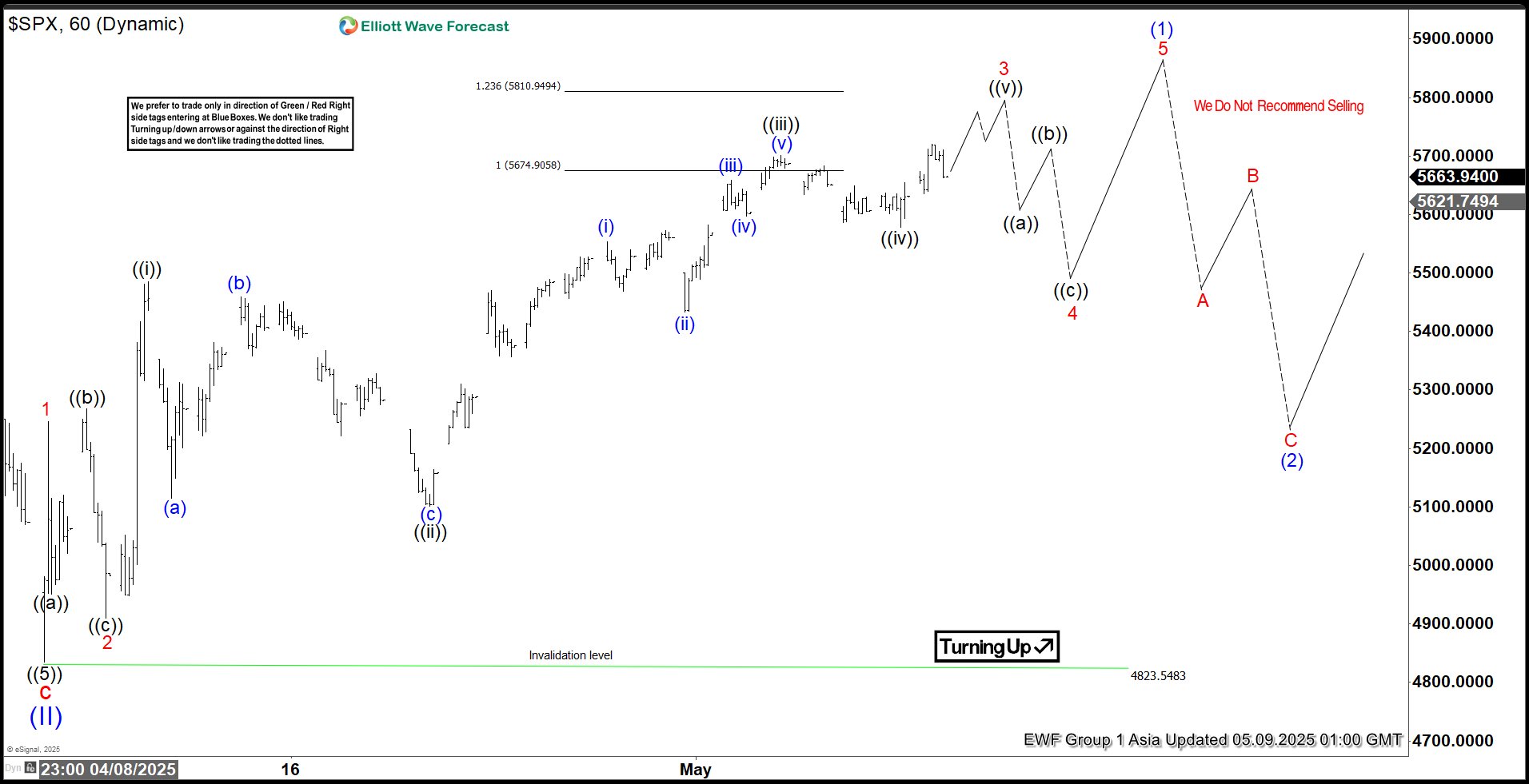Elliott Wave Framework Highlights S&P 500 Bullish Impulse
Image Source: Unsplash
The S&P 500 (SPX) has shown significant correction since its peak on February 17, 2025, before a tariff announcement. We propose that the corrective phase, labeled as wave (II), concluded at 4823. However, for the index to confirm the end of this correction and rule out a potential double correction, it must surpass the prior wave (I) high of 6147.43. Since the wave (II) low, the SPX has embarked on an upward trajectory, characterized as a nesting impulse—a pattern where waves build momentum in a structured, upward climb.
From the wave (II) low, the rally began with wave 1 peaking at 5246.57, followed by a pullback in wave 2 to 4910.42. The index then surged in wave 3, which is unfolding in a five-wave impulse pattern on a smaller degree. Within wave 3, the first sub-wave ((i)) reached 5456.9, with a dip in wave ((ii)) to 5101.63. The index climbed again in wave ((iii)) to 5700.7, followed by a minor pullback in wave ((iv)) to 5578.64. We anticipate the index will extend higher to complete wave ((v)) of 3, followed by a wave 4 correction. Then the Index should do one final push to finish wave 5 of (1). After this, a broader correction from the April 7, 2025 low is expected in wave (2) before the uptrend resumes. As long as the 4823.5 pivot holds, any near-term pullbacks should find support in a 3, 7, or 11-swing pattern, paving the way for further gains. This analysis, rooted in Elliott Wave theory, suggests a bullish outlook for the SPX in the near term, provided key support levels remain intact.
S&P 500 (SPX) 60 Minute Elliott Wave Chart
SPX Video Analysis
Video Length: 00:07:36
More By This Author:
Elliott Wave Perspective: Oil’s Rally Likely To Stall, Signaling Deeper Losses
USDJPY Forecast: Elliott Wave Signals Resumption Of Bearish Momentum
Elliott Wave Forecast: Nike Rally To Fail In 7-Swing Pattern
Disclaimer: Futures, options, and over the counter foreign exchange products may involve substantial risk and may not be suitable for all investors. Leverage can work against you as well as for ...
more




